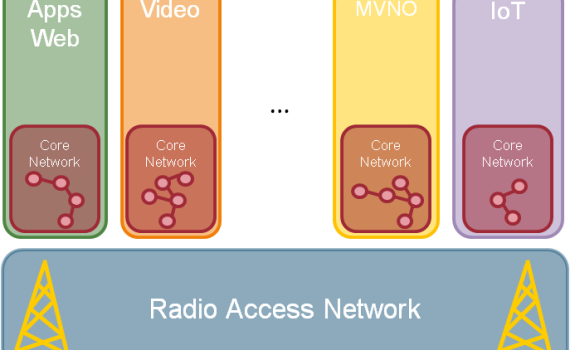
Google FI as a vertical core network operator
Category : Pulse
Google FI is a Mobile Virtual Network Operator (MVNO) that means it does not own its network but instead provides services on top of a partner network operator (in Google FI case Sprint and T-Mobile).
If a user of Google FI and a user of T-Mobile connect to the same cell they both are sharing the same radio resources but go to different APNs, an APN is a name that indicates the core network of the operator and associated configuration. Usually an MVNO shares not only the radio network but also the core network (including voice components), as depicted.

Mobile operators establish wholesale agreements with MVNOs and for example large M2M customers (e.g. automotive) sharing their radio and core networks.
I have no insight to what Google FI does but there would be good reasons for them to operate their own core network since they have a very special environment:
- Google creates the devices (Nexus) and controls the operating system of the mobile devices (Android)
- Google provides its own services on top, so FI’s Voice could use Hangouts instead of VoLTE
- FI is a Wi-Fi first and LTE operator; tunneling all traffic to the same core network (like mobile operators do) provides an equivalent experience to the user who shouldn’t care about Wi-Fi or LTE. FI could even recover the 3GPP concept of ANDSF to steer to which access the user connects to.
Google can also extract a lot of value of owning the core network, the devices, the operating system and providing its own services; they are very good with new business models so I would expect some innovation here.
Today the mobile operator provides radio and core layers; the services or verticals are provided on top, by either the operator or 3rd parties. Thanks to NFV/SDN a possible scenario for tomorrow is that services embed their own core networks. MVNOs could always have done it (technically) but due to cost and efficiencies they didn’t do it. Now with NFV it is possible to deploy a complete core network for even a small amount of subscribers in the cloud without any specific hardware or large investment.

Managing an NFV core network deployment is not much more complex than managing an internet service and with NFV IT and telco are merging . If you want to get to know more about NFV management, I have written a report and you can download it here
For the mobile operator the verticalization of the core network is both a risk and an opportunity. The risk is that they will be reduced to just the radio infrastructure providers for a large number of verticals, like for example those associated with Industry 4.0 and the Internet of Things. The opportunity is to embrace the verticalization themselves for differentiated and personalized services and offering low latency cloud hosting to the verticalized core networks.
